Temple of Preah Vihear
By Rachel Heller
What is the Temple of Preah Vihear?
Preah Vihear is a Hindu temple dating from the 11th century in the far north of Cambodia. It sits high on a mountain right on the border with Thailand. The temple is made up of an entrance stairway, a wide walkway, and a series of shrines set up in an 800-meter-long (2625 ft) line. The whole ensemble faces north toward Thailand.
Disclosure: This article contains affiliate links. Making a purchase through an affiliate link will mean a small commission for this website. This will not affect your price.
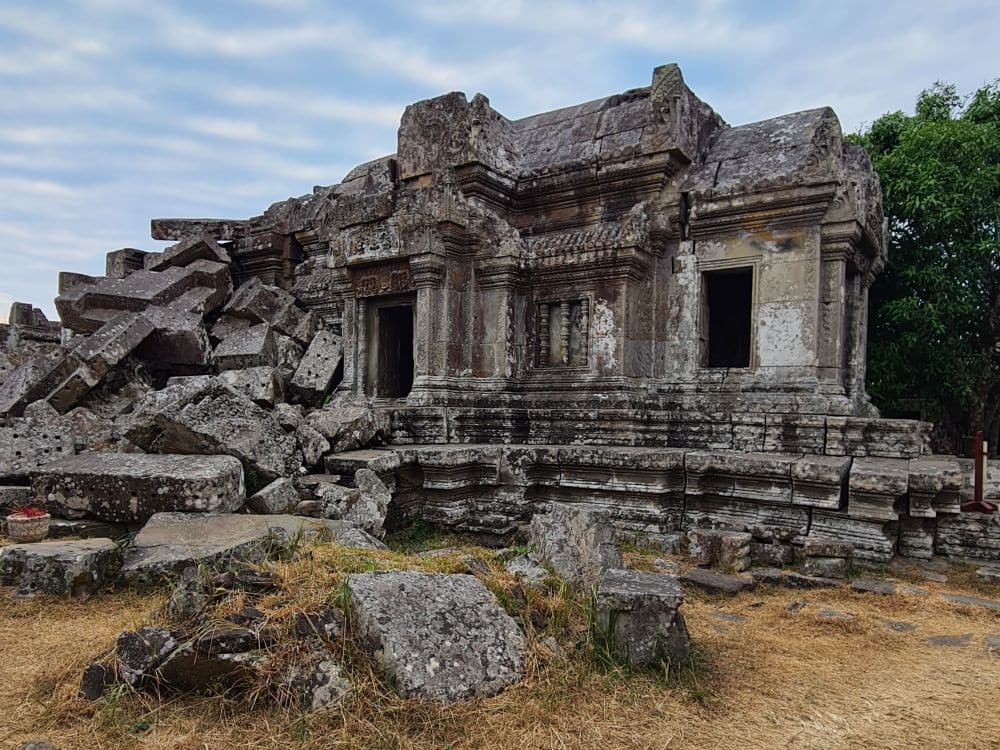
Besides its history as a shrine, this place has a connection to modern Cambodian history. It was the last place that was conquered by the Khmer Rouge when they took over Cambodia. Then, when they had been defeated and reverted to being a rebel group, it was their last holdout.
More recently, a dispute over ownership of the site has simmered for years between Thailand and Cambodia, even leading to actually fighting between the two armies as recently as 2011. Both sides claim this land, but Cambodia seems to have won the legal battle. You’ll see, if you visit, the remaining bunkers and trenches from this conflict, still in use by Cambodian soldiers.
Why is Preah Vihear a UNESCO World Heritage site?
Preah Vihear, according to UNESCO, is “an outstanding masterpiece of Khmer architecture, in terms of plan, decoration and relationship to the spectacular landscape environment. … It is very ‘pure’ both in plan and in the detail of its decoration.” Perhaps because of its relative isolation, the decorative sculpture is particularly well-preserved.
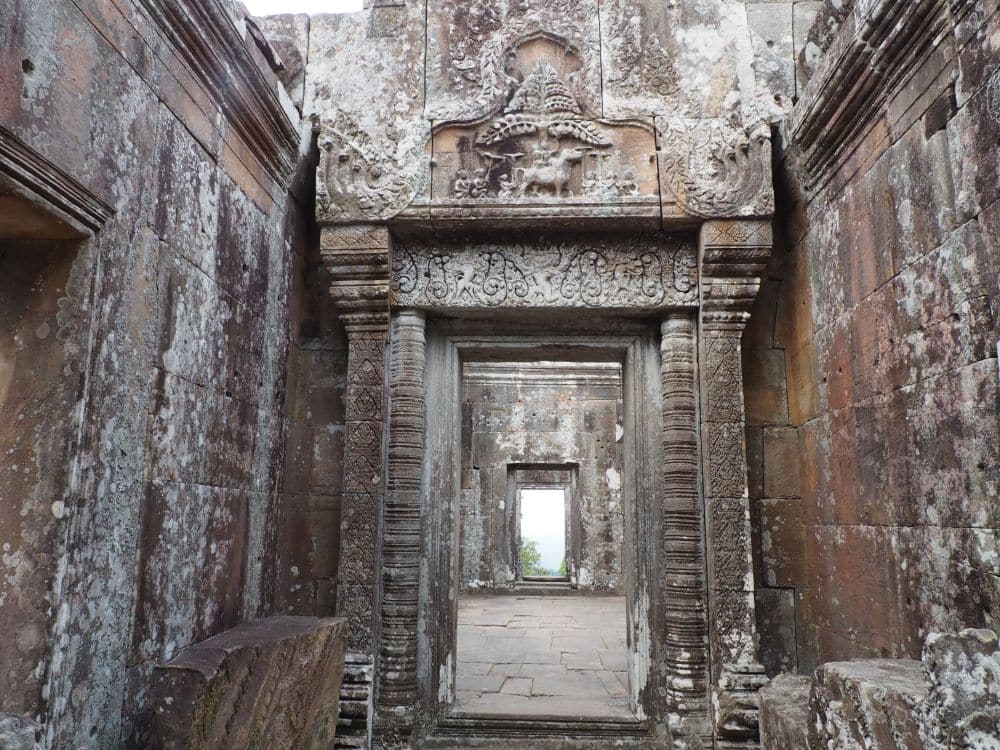
What can you expect on a visit to Preah Vihear?
The temple buildings may be mostly missing their roofs, but the stonework covering them is still in good shape. The images show stories from Hindu mythology, mostly regarding the god Shiva, while some of the stonework seems purely decorative, with, for example, leafy designs around doorways.
The temple makes an impression on visitors today as it would have at its height. Because of its positioning – the fact that it’s oriented in a straight line 800 meters long (2625 feet) and that it is approached from one direction only – it reveals itself gradually. You arrive today on a wooden walkway, but the original visitors would have climbed a wide, grand stairway, only seeing the first of the temple sanctuaries when they arrived at the top of the stairs. There, two huge nagas – many-headed snakes – greet you on either side of the stairway’s top.
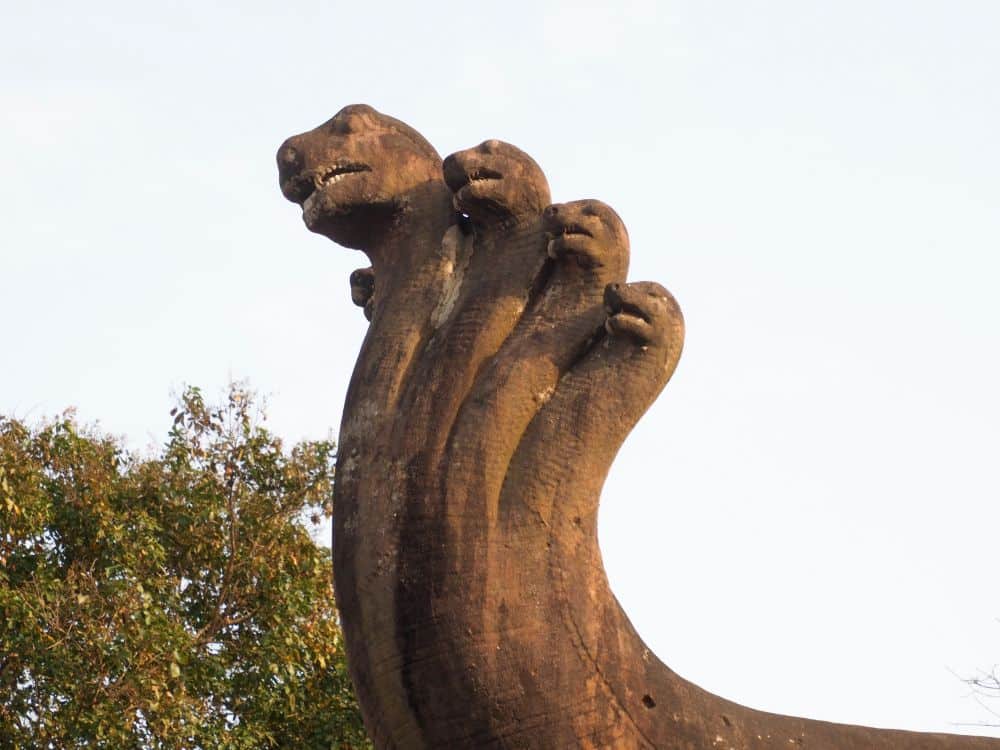
Walking between them, you pass along a wide stone-paved walkway lined with lingams, which are both phallic symbols and abstract representations of Shiva. Ahead of you is the first temple (Gopura V), up a shorter stairway. From the walkway below, the temple does not look large, but it opens up as you climb the stairs.
Once through the temple, you’ll enter the second, and then the third, and so on, but you’ll never be able to see all the shrines at the same time. Look back after leaving each shrine to get a different view. Notice the second temple, sometimes called the gilt temple (Gopura IV); the stone has a bit of a gold tinge.
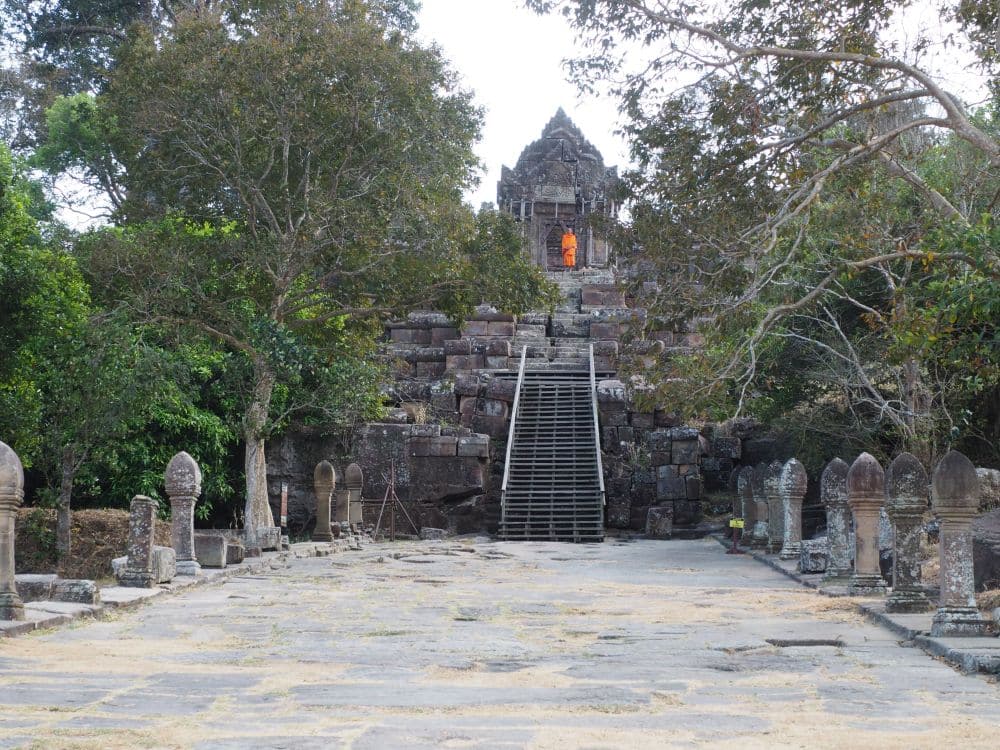
At the end of the line, you’ll see some amazing wide views, though how wide will depend on the weather and the season. When we were there it was January and it was quite hazy both with the weather and with the fact that some fields were being burned. This causes a lot of problems with air quality in this region, particularly in February and March.
Is Preah Vihear worth visiting?
That depends. If you love nothing better than a good ruin, this is a great one to visit. The imagery on the buildings is beautiful. The location is dramatic, and the way the ruins reveal themselves to you as you walk the 800 meters is wonderful. If you are interested in Hindu art and architecture, it’s worth a trip. However, it’s hard to get to, involving a long drive from anywhere and a lot of time: probably requiring an overnight stay.
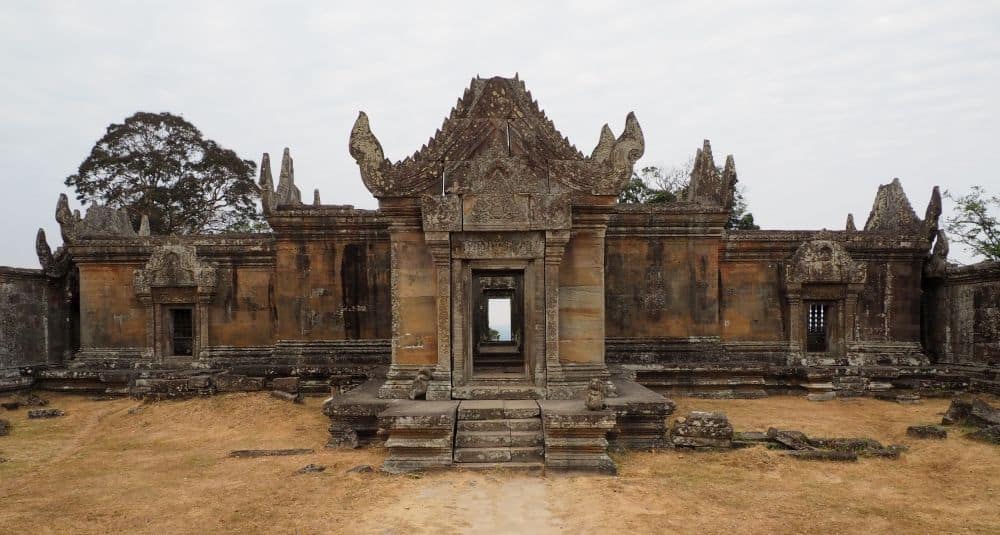
What sorts of travelers would like Preah Vihear?
Anyone interested in Hinduism, art, architecture and/or religious history. Children would enjoy the ride up the hill and exploring the ruins.
Take a day tour from Siem Reap to Preah Vihear or one that also includes Koh Ker.
Tips for visiting Preah Vihear
Getting to the ruin involves parking your car and boarding a four-wheel-drive vehicle for the last part of the trip, unless you’ve arrived with a vehicle that can handle it and the local staff allows it. It’s a very steep uphill drive.
Once you arrive, there’s still quite a bit of walking and climbing stairs to see the whole thing. It is not at all wheelchair accessible, and there’s no way to view the sanctuaries without climbing some stairs.
Take water and sun protection. Also bring along either Cambodian money or a US dollar or two to tip the 4WD driver.
Take your time and notice the detail work on the temples.
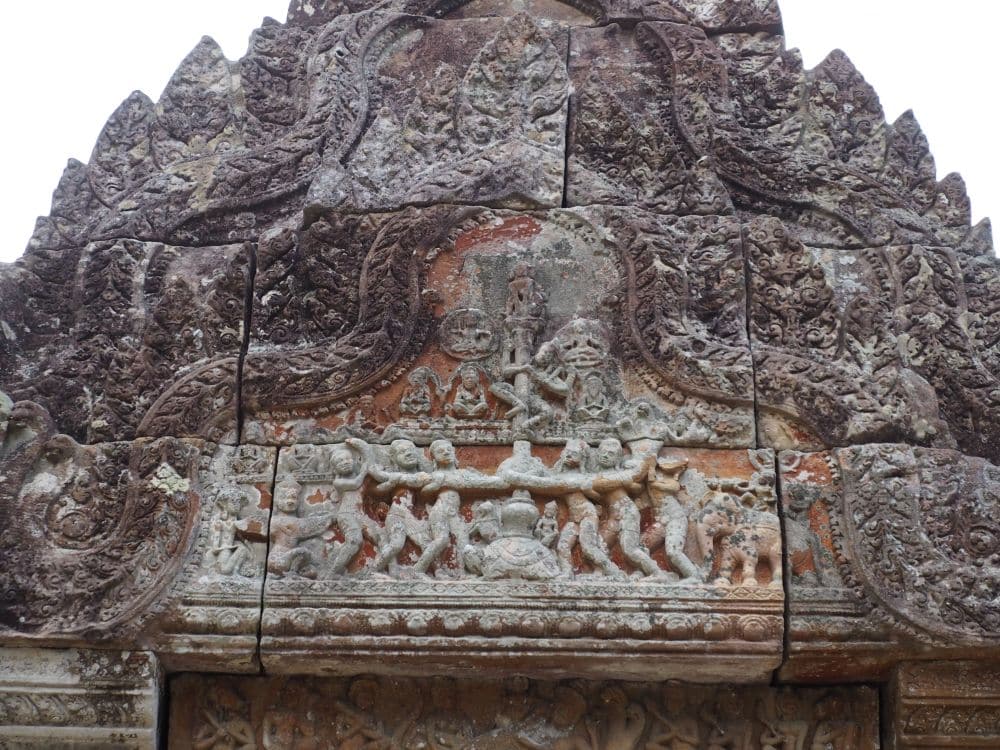
At the end, you’ll see a small, newer shrine. This is apparently in memory of the last Khmer Rouge rebel who holed up here as the Cambodian forces defeated them. The story is that he killed himself rather than have to surrender.
No shorts that don’t cover your knees and no sleeveless shirts. Preah Vihear is still used as a temple.
Where is Preah Vihear?
In the far north of Cambodia, the temple is only reachable by car or motorcycle. You can rent a car on arrival in Cambodia or, as we did, hire a car and driver and, if you wish, a guide. The drive is about four hours and about 225 km (140 mi) from Siem Reap and about two hours 15 minutes (135 km/84 mi) from Koh Ker, also a UNESCO site. Even though it’s right on the border with Thailand, you can’t cross the border anywhere near there. You can only reach Preah Vihear from Cambodia.
Preah Vihear does not seem to have an official website which is another reason why it might be safest to hire a car and driver and leave it to the locals to figure out things like admission fees and opening hours.
Have you been to Preah Vihear? If so, do you have any additional information or advice about this UNESCO World Heritage site? Please add your comments below!

